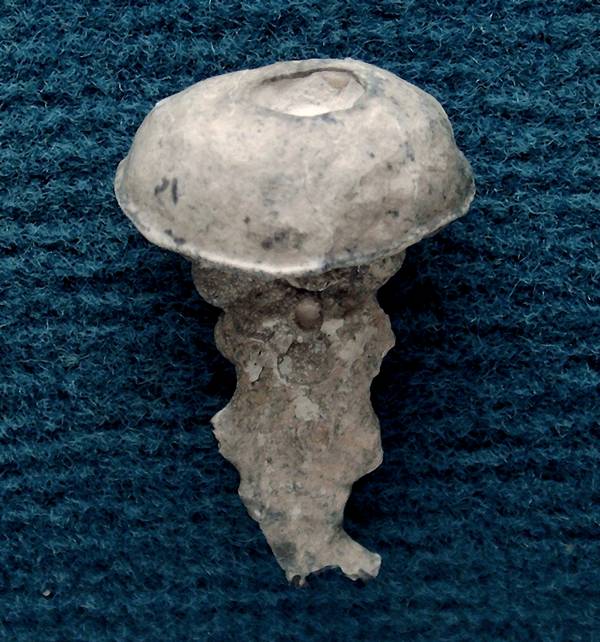
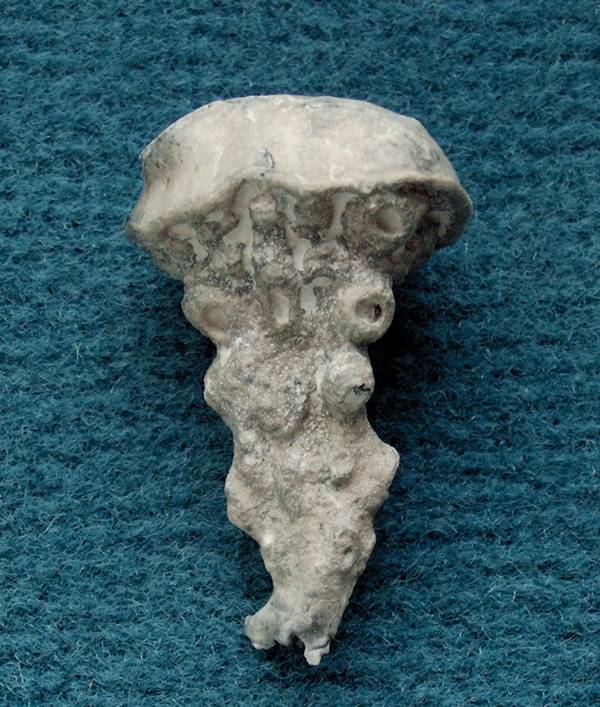
Camerospongia (Camerospongia) fungiformis
Goldfuss 1831
Camerospongia fungiformis is moderately common in the Lower Campanian of Misburg and Höver, and is also present in the Upper Campanian.
Camerospongia fungiformis (also referred to as "eye sponge") is characterized by its smooth hemispherical upper surface formed by a dense siliceous membrane, and by its central, rimmed osculum. The diameter of the hemispherical top is usually between 15 and 35 mm, and the osculum is around 10 mm wide.
The siliceous membrane of Camerospongia fungiformis ends with a pronounced circular rim at the base of the hemisphere (different to Cystispongia). The recessed base consists of radial, very irregular ribs which may also run down the stalk. Papilliform processes and raised parietal oscula occur on these ribs. The lower part of Camerospongia fungiformis has a rough appearance, which is due to a porous cortex.
The images show two different views of a typical example.
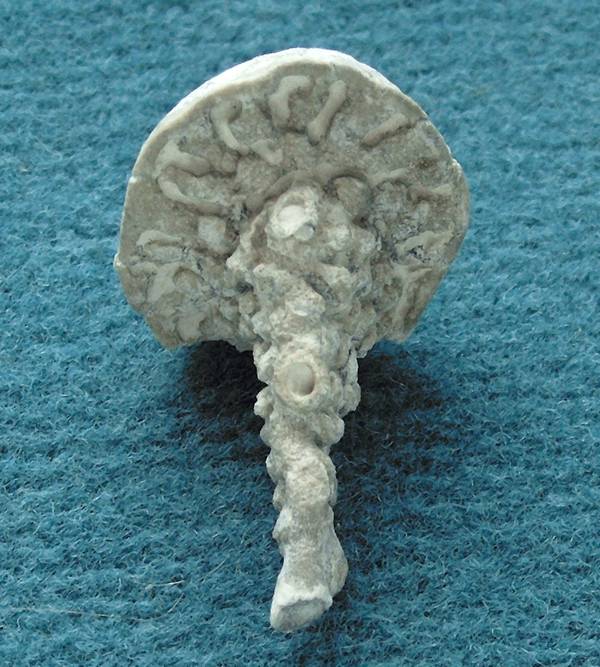
Underside and stalk with parietal oscula of a second example of Camerospongia fungiformis.
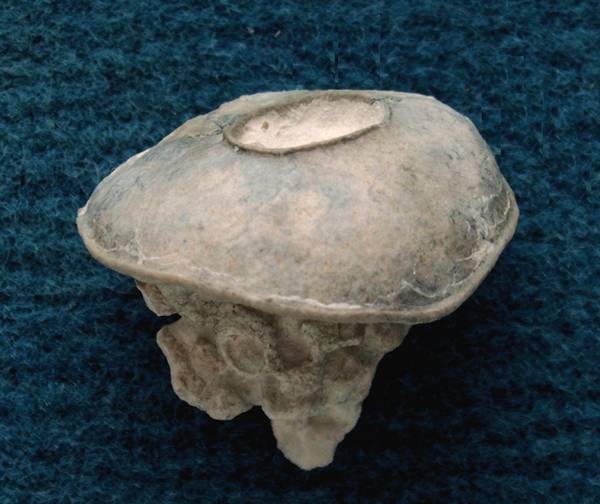
A third example with a shorter basal section.
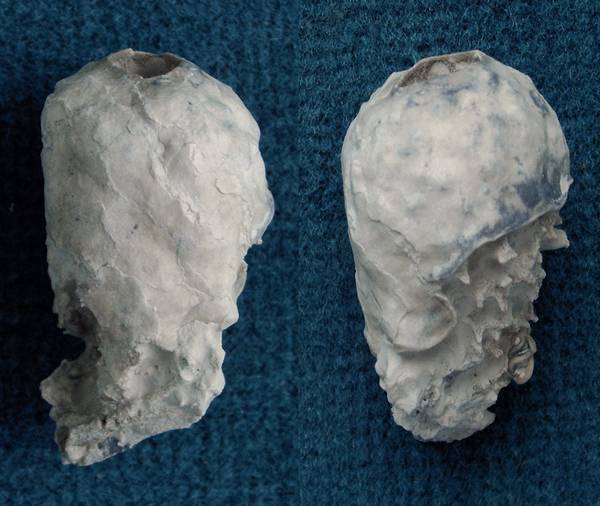
Camerospongia (Synolynthia) monostoma*
Pomel 1872
Cystispongia monostoma is less common than Camerospongia fungiformis, but occurs throughout the Lower and Upper Campanian of Höver and Misburg. Although Cystispongia monostoma is often confused with the superficially similar Camerospongia fungiformis, the macroscopic distinction is quite clear once one has seen a number of specimens of each kind, and the separation of the two kinds at the genus level (cf. Schrammen, 1912) seems well justified. Hence, Schrammen's designation is preferred here.
The bodies of Cystispongia monostoma are also covered by a dense siliceous membrane, which however extends further down to cover the sponge almost entirely. A sharp recession and a stalk are lacking, and the siliceous membrane ends with an irregular rim at the base. The base has a cavernous appearance, with many short spines.
The author could confirm Schrammen's (1912) observation that underneath the siliceous membrane of Cystispongia monostoma, accumulations of small fused hexactines are present, which are attached to the larger lychnisks which form the dictyonal framework.
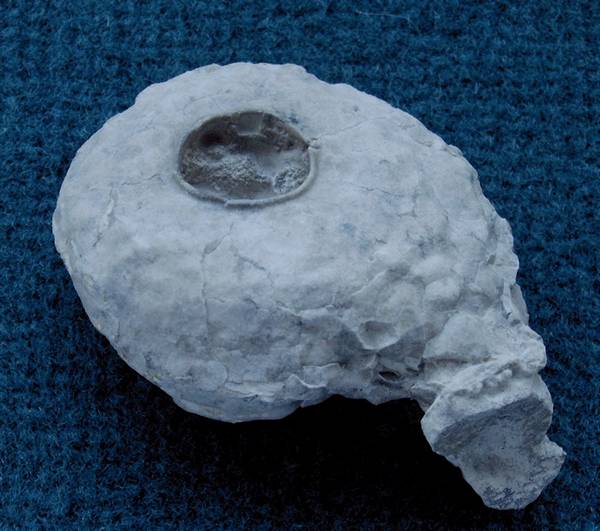
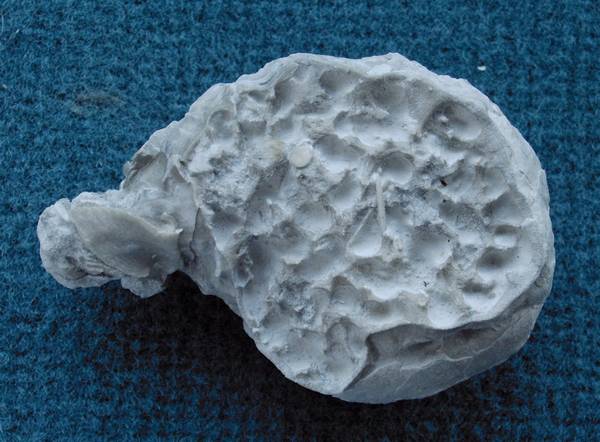
Top and bottom view of a flat specimen of Cystispongia monostoma.
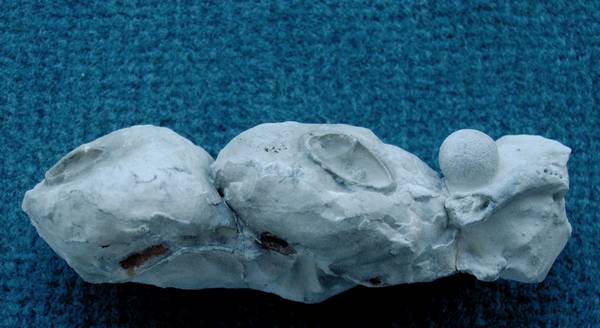
Groups of Cystispongia monostoma are not uncommon. (Spherical sponge is Porosphaera globularis)
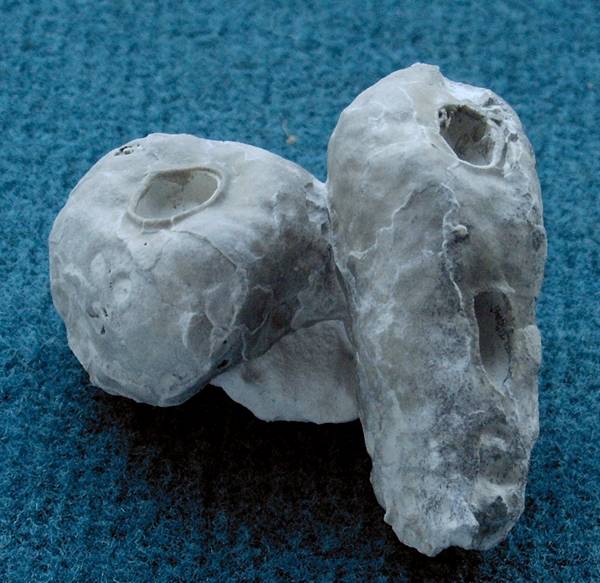
Another group of Cystispongia monostoma. Notice that the indivudal in the right has two oscula.